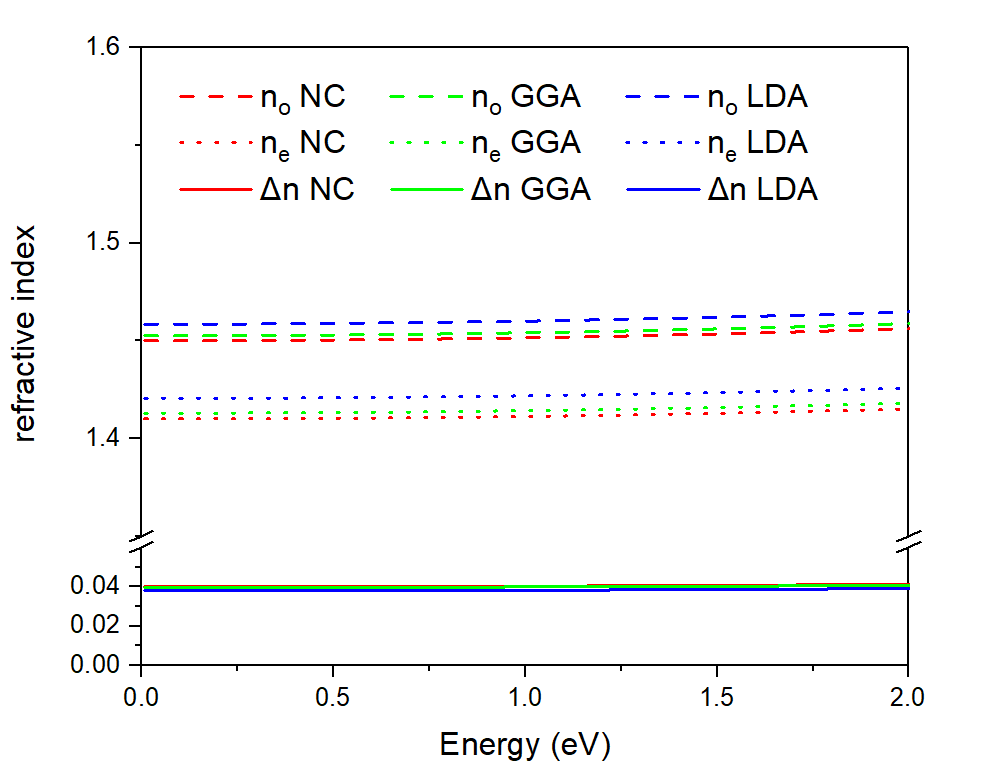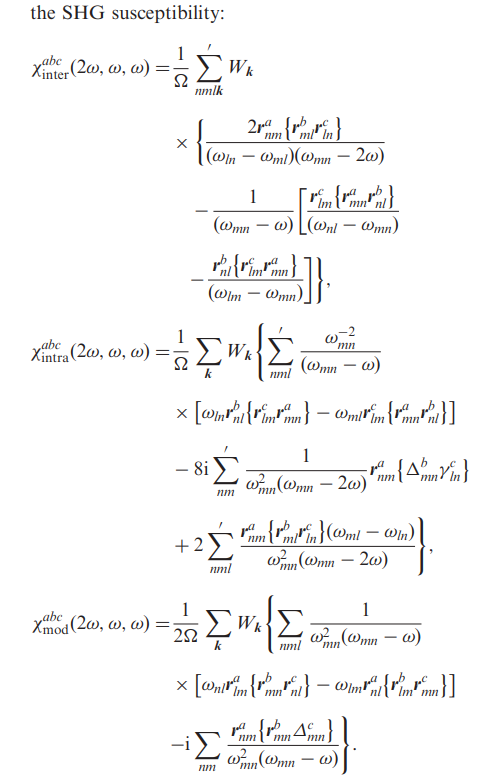Hello, everyone, When I used abinit to calculate the optical properties, I found that the calculated results of the intermediate point function and the linear optical properties are quite different from the experimental values, but the results of the second-order nonlinear optical properties are in good agreement with the experimental values. My input file is as follows, where optics.abi is to get the ddk file, and toptic.abi is to process the calculation result. Since the content of the calculation is unpublished, I have omitted the atomic coordinates and some structural information, and due to the limitation of computing resources, the k-point density has not been very large.
optics.abi (2.2 KB)
toptic_2.abi (1.3 KB)
My calculation results are as follows:


The experimental value of no of this compound is about 1.4, the experimental value of ne is about 1.48, and the birefringence is between 0.07-0.08. The second-order susceptibility is 0.94pm/V@1064nm. By comparison, it can be found that the calculated second-order polarizability is in good agreement with the experimental value, but the linear optical properties are quite different.
I wonder why there is such a strange phenomenon. As far as I know,the formula for calculating the imaginary part of the dielectric function is

The real part of the dielectric function can be obtained using Kramers-Kronig transformation. At the same time, The formula for calculating the second-order polarizability of sum-over-states using independent electronic states is

The calculations of linear optical properties and nonlinear optical properties are related to the optical transition matrix elements, so why don’t the calculation results agree well with the experiment at the same time?
I am a novice in this field, and look forward to your replies and discussions! Thank you very much!